- News
- Reviews
- Bikes
- Accessories
- Accessories - misc
- Computer mounts
- Bags
- Bar ends
- Bike bags & cases
- Bottle cages
- Bottles
- Cameras
- Car racks
- Child seats
- Computers
- Glasses
- GPS units
- Helmets
- Lights - front
- Lights - rear
- Lights - sets
- Locks
- Mirrors
- Mudguards
- Racks
- Pumps & CO2 inflators
- Puncture kits
- Reflectives
- Smart watches
- Stands and racks
- Trailers
- Clothing
- Components
- Bar tape & grips
- Bottom brackets
- Brake & gear cables
- Brake & STI levers
- Brake pads & spares
- Brakes
- Cassettes & freewheels
- Chains
- Chainsets & chainrings
- Derailleurs - front
- Derailleurs - rear
- Forks
- Gear levers & shifters
- Groupsets
- Handlebars & extensions
- Headsets
- Hubs
- Inner tubes
- Pedals
- Quick releases & skewers
- Saddles
- Seatposts
- Stems
- Wheels
- Tyres
- Health, fitness and nutrition
- Tools and workshop
- Miscellaneous
- Buyers Guides
- Features
- Forum
- Recommends
- Podcast
review
 2023 2023 Cervelo Soloist Ultegra Di2 - riding 2.jpg
2023 2023 Cervelo Soloist Ultegra Di2 - riding 2.jpg£4,500.00
VERDICT:
Needs lighter wheels to get the best out of it, but it's a belter of a frameset
A good all-rounder regardless of topography
Comfortable ride
Quick and nimble responses
Low-spec wheels for the money
Weight:
8,470g
Contact:
At road.cc every product is thoroughly tested for as long as it takes to get a proper insight into how well it works. Our reviewers are experienced cyclists that we trust to be objective. While we strive to ensure that opinions expressed are backed up by facts, reviews are by their nature an informed opinion, not a definitive verdict. We don't intentionally try to break anything (except locks) but we do try to look for weak points in any design. The overall score is not just an average of the other scores: it reflects both a product's function and value – with value determined by how a product compares with items of similar spec, quality, and price.
What the road.cc scores meanGood scores are more common than bad, because fortunately good products are more common than bad.
- Exceptional
- Excellent
- Very Good
- Good
- Quite good
- Average
- Not so good
- Poor
- Bad
- Appalling
The new Cervelo Soloist sits in the gap between the very aero S5 and the very light R5 models. That doesn't mean it isn't as good as either of them; in fact, it actually makes a brilliant blend of streamlining and weight reduction for the road rider who tackles a bit of everything. As Goldilocks would say: 'It's just right.'
Back in September of last year we announced the launch of the new Soloist, which Cervelo describes as a bike for 'modern road racers who want something fast and light.'
> Buy the Soloist Ultegra now from Cervelo
In a like-for-like build the Soloist is around 250g lighter than the full aero S5, and about 250g heavier than the summit-searching R5.
It actually works very well indeed. At 8.47kg I'd say the weight isn't bad considering the middling spec of the wheelset and finishing kit, so it's a capable climber and feels responsive when sprinting. It also feels quick rolling along on the flat.
It's definitely begging for some deeper section rims, however, such as the carbon hoops found on models higher up the range, to really exploit the performance.
The most noticeable thing is the ride quality, and in a good way. For such a chunky front end the Cervelo never feels harsh or too tight over buzz-inducing broken tarmac, while the oversized chainstays and huge bottom bracket have their stiffness tamed by slender seatstays. It takes the sting out of poor road surfaces.
This ability to minimise buzz gives a boost to feedback levels. With no distorting chatter coming through from the tyres, the bike talks to you clearly, helping you push hard through the bends or on descents. Even the slightest break of traction shines through instantly.
With a steepish head angle and the resulting quick handling, the Soloist's front end is very quick to respond to your inputs, whether you're lining up the front wheel into a corner or when adjusting your line due mid-bend for unexpected potholes, gravel or anything else.
This 56cm model keeps the wheelbase just under a meter, which means the Soloist maintains the nimbleness needed for a fast road bike while giving a planted feel on the road. Overall, Cervelo has nailed the geometry for confident, performance-orientated riders without alienating those who don't want to take the corners as fast as they possibly can.
The riding position can be made aggressive with the stem slammed, or kept not that extreme at all with about 20mm of spacers underneath the stem. So there's scope to switch the Soloist between a nose-down racer and a comfortable long-distance machine, providing you leave enough steerer tube.
On the whole, the Soloist is a great bike to ride. It can feel exhilarating and fast when you really push it, but if you knock things back a notch you still have a smooth riding and comfortable bike that's quick without being a handful. It's a capable climber, descender and distance machine all rolled into one.
Frame and fork
The Soloist's frame is sculpted from carbon fibre and the aerodynamic efforts are plain to see; the traditional tube shapes are smoothly blended into one another, while the full carbon fork is integrated with the head and down tube junction. Unlike many modern frames though, there isn't that much of a slope on the top tube, creating what I suppose is best described as a semi-compact design.
It's finished here in lovely black paint, with a metallic flake under the lacquer which changes colour in the sunlight. It looks absolutely awesome.
Both the frame and the fork use the now standard flat mounts for the hydraulic brake calipers, and 12mm diameter thru-axles for wheel retention.
Unlike some of the newer framesets though, the Soloist is capable of running both mechanical and electronic wired/wireless groupsets. A large percentage of today's high-end road bikes are shifting to electronic only.
The cables and hoses are run into the frame and fork via the head tube and headset, so the frame still has a very smooth and clean look to it.
The bottom bracket is a BBRight-47 (also known as a T47A or BBCorrect, helpfully) and is compatible with frames with an asymmetrical 77mm shell; it puts the non-driveside bearing inside the frame, and the driveside bearing outside. It uses T47 cups, which thread into the frame rather than being press-fit.
We have seen brands such as Trek switch to T47 to exploit the same benefits press-fit BBs offer – larger bearings for increased stiffness – while avoiding the issues of creaking and wear created by poor tolerancing between frames and bearing cups.
As for mounting points, you only get the two usual bottle cage positions, although the down tube mount gets three bolts to give some position adjustment.
The new Soloist comes with an impressive 34mm of tyre clearance – a few years back that would have made it a gravel bike!
Geometry wise the Soloist shares the numbers and angles of the R5, and is available in six sizes ranging from a 48 to a 61. That means top tube lengths of 516mm on the smallest and 598mm on the largest. This 56 has a top tube measuring 565mm, and stack and reach figures of 565mm and 392mm respectively.
The head tube is 156mm with an angle of 73°, which is the same as the seat angle. The overall wheelbase is 994mm with 410mm chainstays, and the fork offset is 45.5mm.
Finishing kit
Cervelo specs the Soloist in a range of builds including electronic and mechanical groupsets, and it tops out with SRAM's Force eTap AXS at £7,100 with Reserve carbon fibre wheels. At the other end is a mechanical 105 build at £3,500. A frameset is available for £3,000.
This mechanical Ultegra model is £4,500. The R8000 iteration of the Ultegra groupset has been mentioned many times on road.cc, and fully reviewed on its own as well.
It's a lovely groupset to use, offering virtually all of the performance of Dura Ace (when it was available as mechanical) for a bit more weight and a lot less cost.
You get a 52/36t chainset mated to an 11-30t, 11-speed cassette, which gives the ideal spread of gears for the performance of the Soloist – which is to say, its ratios focus on speed, but have enough bail out gears for the majority of hills.
The hydraulic brake calipers offer plenty of bite without being grabby, and have more than enough power paired to these 160mm rotors to bring you to a stop quickly.
The cockpit is made up of Cervelo-branded alloy components. The handlebar is a standard round affair – no flat sections on the tops for aero gains – and the shallow drop means that getting aero doesn't have to mean too extreme a position.
The stem is a standard-looking unit apart from it having a computer mount on the face plate.
Most frames that run the cables in through the headset and head tube use a stem like the Deda Powerbox, which runs those cables and hoses internally from the handlebar. Cervelo hasn't done that, instead running them under the stem and into the frame from the large spacer atop the head tube. This makes it easy to change the stem without bleeding the brakes, and easier to take the bike apart for travelling.
Sitting atop the Cervelo SP27 Carbon seatpost is a Selle Italia Model X SuperFlow FeC saddle, which I rather liked. It curves up towards the rear, which I get on with as I can push against it when climbing in the saddle, and I prefer a short-nose for when I'm in the drops.
The wheelset is Fulcrum's Racing 600 DB, the 'original equipment' (OE) version of its Racing DB 6 wheels. They are tubeless-ready thanks to Fulcrum's 2-Way Fit system, and with their 24mm aluminium rims weigh a claimed 1,780g.
They are a decent set of wheels for performance and durability, although the Soloist is screaming out for something lighter and deeper.
The tyres are Vittoria Rubino Pro TLR Gs in a 28mm width. They roll well and offer a decent amount of grip in the wet or dry.
Competition
Mat recently reviewed (and very much liked) the Giant Propel Advanced Pro 1, which comes with a SRAM Rival eTap aXS groupset and carbon fibre wheels. It retails for £5,499 and weighs much the same as the Soloist we have here.
A similarly-equipped Cervelo is £5,000, but you are only getting the same Fulcrum 600 DB wheelset as found on this Ultegra model.
An Ultegra Di2 build of the Giant is £5,999, whereas a Soloist with the same groupset and Reserve carbon wheels is £6,800.
At the same time as reviewing the Soloist, I have also been riding the Merida Reacto 7000. The Reacto is Merida's aero race bike, one that feels fast and has a good level of comfort about it too. The 7000 is based around a Rival eTap AXS groupset and has deep section carbon wheels from Merida's own catalogue, and is priced at an impressive £4,350.
The Reacto 9000 uses a lighter CF5 frame (pro peloton level) compared to the CF3 found on the 7000, comes with an Ultegra Di2 groupset and 65mm deep Reynolds wheels, and is £6,500.
Overall
So, while there are aero road bikes out there that offer a comfortable ride at a lower price, the Soloist really is a lovely bike to ride.
The balance of aero efficiency and low weight works nicely, while the ride quality is exceptional for such a stiff bike. The highlight is the geometry though, which – while looking quite steep and aggressive on paper – doesn't really pan out like that in the real world. Yes, the steering is quick, and it's a nippy bike on the whole, but all of that can be exploited whatever your level of riding experience.
Verdict
Needs lighter wheels to get the best out of it, but it's a belter of a frameset
If you're thinking of buying this product using a cashback deal why not use the road.cc Top Cashback page and get some top cashback while helping to support your favourite independent cycling website
road.cc test report
Make and model: Cervelo Soloist Ultegra
Size tested: 56
About the bike
List the components used to build up the bike.
HEADSET: FSA IS2 1-1/4 x 1-1/2
THRU AXLES: Cervelo Aero Thru-Axles, 12x100/142
WHEELS: Fulcrum Racing 600 DB, 12x100(F)/142(R), 24H, 20mm IW, HG freehub, centerlock, tubeless compatible
TYRES: Corsa N.EXT TLR G2.0 700x28c OR Vittoria Rubino Pro TLR G 28c Black
CRANKSET: Shimano Ultegra, R8000, 52/36T, 11 Speed
BOTTOM BRACKET: JY BBright T47, for 24mm spindle
CHAIN: Shimano HG701, 11 speed
FRONT DERAILLEUR: Shimano Ultegra, R8000, 11 speed
REAR DERAILLEUR: Shimano Ultegra, R8000 GS, 11 speed
CASSETTE: Shimano Ultegra, 11-30, 11 Speed
SHIFTERS: Shimano Ultegra, R8020, 11 speed
HANDLEBAR: Cervélo Alloy, 31.8mm clamp
STEM: Cervélo ST36 Alloy
BRAKE CALIPERS: Shimano Ultegra
SADDLE: Selle Italia Model X SuperFlow FeC
SEATPOST: Cervélo SP27 Carbon
Tell us what the bike is for and who it's aimed at. What do the manufacturers say about it? How does that compare to your own feelings about the bike?
Cervelo says, "Soloist sits right between S5 and R5 on the performance scale, while having a price tag that's less World Tour, more Road Trip. It's about 250g heavier than R5, and 250g lighter than S5. It's 190g slower than S5, but 126g faster than R5. You get the idea. It's the 'just-right' answer for the rider trying to find a smart, intentional compromise."
It's a great all round road bike, with a smart balance of aerodynamics for speed and lightness for climbing.
Where does this model sit in the range? Tell us briefly about the cheaper options and the more expensive options
The range starts out with mechanical 105 (£3,500) and tops out with SRAM Force eTap AXS at £7,100. Shimano 105 and Ultegra Di2 models are available too, as is SRAM Rival eTap.
Frame and fork
Overall rating for frame and fork
8/10
Tell us about the build quality and finish of the frame and fork?
A well made frame and fork with a very cool and eye-catching metallic paintjob.
Tell us about the materials used in the frame and fork?
Both the frame and fork are carbon fibre.
Tell us about the geometry of the frame and fork?
The geometry is performance-focused, with quite aggressive angles at the front and a short wheelbase keeping things nimble.
How was the bike in terms of height and reach? How did it compare to other bikes of the same stated size?
The stack and reach figures are fairly typical for a bike of this size.
Riding the bike
Was the bike comfortable to ride? Tell us how you felt about the ride quality.
The frame and fork has a very good ride quality, especially considering how stiff they are.
Did the bike feel stiff in the right places? Did any part of the bike feel too stiff or too flexible?
Yes, stiffness levels are very good around the lower half of the frame, and the fork copes with heavy braking and steering loads.
How did the bike transfer power? Did it feel efficient?
Due to the stiffness the power transfer is great, and therefore the bike feels efficient.
Was there any toe-clip overlap with the front wheel? If so was it a problem?
No.
How would you describe the steering? Was it lively neutral or unresponsive? Fast and fun.
Tell us some more about the handling. How did the bike feel overall? Did it do particular things well or badly?
The steering is quick here, but well balanced so it is controllable and fun at speed.
Which components had the most effect (good or bad) on the bike's comfort? would you recommend any changes?
I'm a big fan of the Selle Italia saddle.
Which components had the most effect (good or bad) on the bike's stiffness? would you recommend any changes?
The aluminium cockpit components are stiff enough for hard, out of the saddle efforts.
Which components had the most effect (good or bad) on the bike's efficiency? would you recommend any changes?
The weight of the wheels takes the edge off acceleration and climbing. An upgrade here would pay dividends in overall performance.
Rate the bike for efficiency of power transfer:
8/10
Rate the bike for acceleration:
8/10
Rate the bike for sprinting:
8/10
Rate the bike for high speed stability:
9/10
Rate the bike for cruising speed stability:
8/10
Rate the bike for low speed stability:
8/10
Rate the bike for flat cornering:
8/10
Rate the bike for cornering on descents:
8/10
Rate the bike for climbing:
8/10
The drivetrain
Rate the drivetrain for performance:
9/10
Rate the drivetrain for durability:
8/10
Rate the drivetrain for weight:
8/10
Tell us some more about the drivetrain. Anything you particularly did or didn't like? Any components which didn't work well together?
Ultegra is one of the best mechanical groupsets out there, with great shifting performance and braking power.
Wheels and tyres
Rate the wheels for performance:
7/10
Rate the wheels for durability:
8/10
Rate the wheels for weight:
7/10
Rate the wheels for comfort:
7/10
Tell us some more about the wheels.Did they work well in the conditions you encountered? Would you change the wheels? If so what for?
Decent wheels overall, but a bit weighty for a frameset of this quality.
Rate the tyres for performance:
7/10
Rate the tyres for durability:
8/10
Rate the tyres for weight:
7/10
Rate the tyres for comfort:
7/10
Tell us some more about the tyres. Did they work well in the conditions you encountered? Would you change the tyres? If so what for?
Like the wheels, these tyres are good all-rounders. They're ideal for general road riding and training.
Controls
Rate the controls for performance:
7/10
Rate the controls for durability:
8/10
Rate the controls for weight:
7/10
Rate the controls for comfort:
7/10
Tell us some more about the controls. Any particularly good or bad components? How would the controls work for larger or smaller riders?
A good level of finishing kit, if not anything flash. Does the job well though.
Your summary
Did you enjoy riding the bike? Yes
Would you consider buying the bike? Yes
Would you recommend the bike to a friend? Yes
How does the price compare to that of similar bikes in the market, including ones recently tested on road.cc?
You can get similar bike with higher specs for less – see the review for examples.
Rate the bike overall for performance:
8/10
Rate the bike overall for value:
4/10
Use this box to explain your overall score
There's some well-priced competition out there, but cost aside the Soloist is a lot of fun to ride. It has a great ride quality and the geometry makes it very capable, without alienating those who aren't the most confident of riders.
About the tester
Age: 44
I usually ride: This month's test bike My best bike is: B'Twin Ultra CF draped in the latest bling test components
I've been riding for: Over 20 years I ride: Every day I would class myself as: Expert
I regularly do the following types of riding: time trialling, commuting, club rides, sportives, fixed/singlespeed,
As part of the Tech Hub here at F-At Digital, our senior product reviewer Stu uses the knowledge gained from putting well over a 1,000 products through their paces (including hundreds of bikes) to write in-depth reviews of a huge range of kit. After first throwing his leg over a race bike back in 2000, Stu's ridden more than 160,000 miles on road, time-trial, track, and gravel bikes, and while he's put his racing days behind him he still likes to smash the pedals rather than take things easy. Although, as he spends a fair bit of his time reviewing ebikes these days he's becoming an expert in letting the motor take the strain. He's also waiting for 23mm race tyres to make a comeback!
Latest Comments
- perce 6 min 8 sec ago
Aw bless. My wife and I usually go to our local M&S cafe once a week for a bite to eat, usually Wednesday but sometimes Thursday. I usually...
- cyclisto 7 min 56 sec ago
I am a big guy and I fit perfectly in small A-segment cars. Other than boot space there is no real reason to get such huge cars, but I see much...
- Exup 1 hour 22 min ago
At least some justice is being done........
- BIRMINGHAMisaDUMP 1 hour 32 min ago
I imagine the Police treat bike theft as an insurance issue rather than a criminal issue. Can't blame them to be honest. The best thing is to use...
- David9694 1 hour 58 min ago
Police launch investigation into destruction of barber shop in Hythe High Street...
- barbarus 10 hours 25 sec ago
I live right in the centre of this. It's really heartening to read that there are people in favour....
- ktache 10 hours 28 min ago
I'd love for them to put a number on that "inappropriate speed"
- Nick T 11 hours 21 min ago
They need to use some harder material for the cleat retention clip really, that's worn out long before any bearing has had a chance to fail on...
- yiipeeia 14 hours 11 min ago
I am 67 and I cycle with two groups during the year The Haddenham Easyriders International who ride during the summer on Thursday evenings, and The...
- don simon fbpe 14 hours 22 min ago
Brexit is a wholly selfish act....
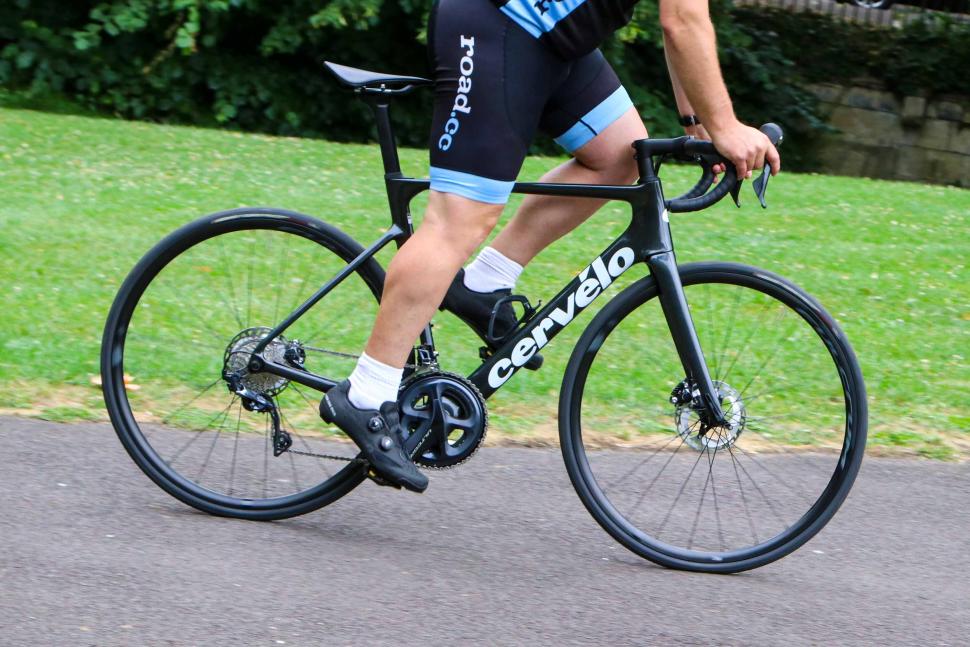


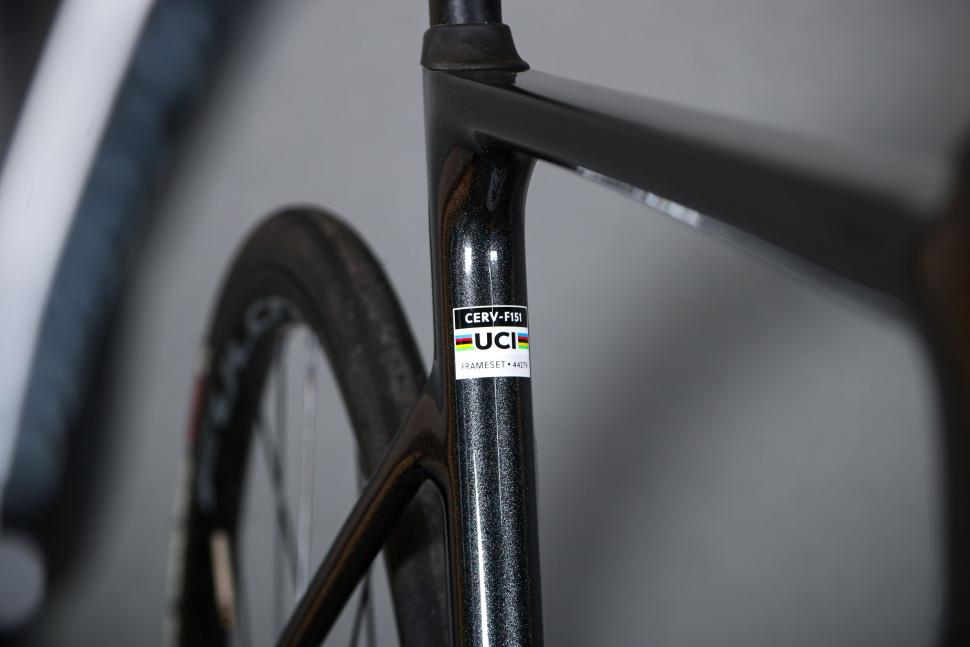
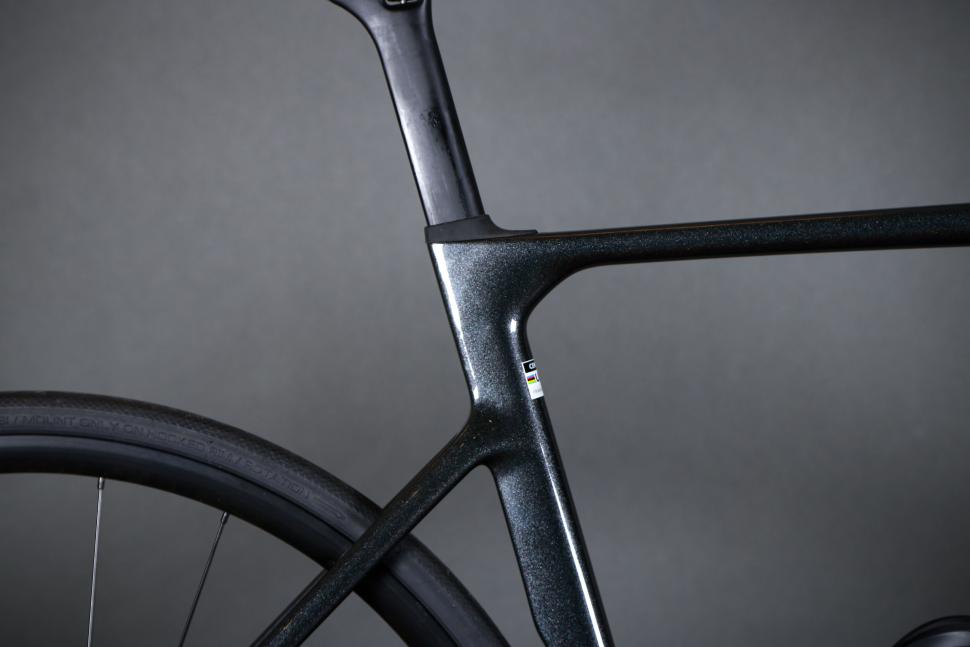
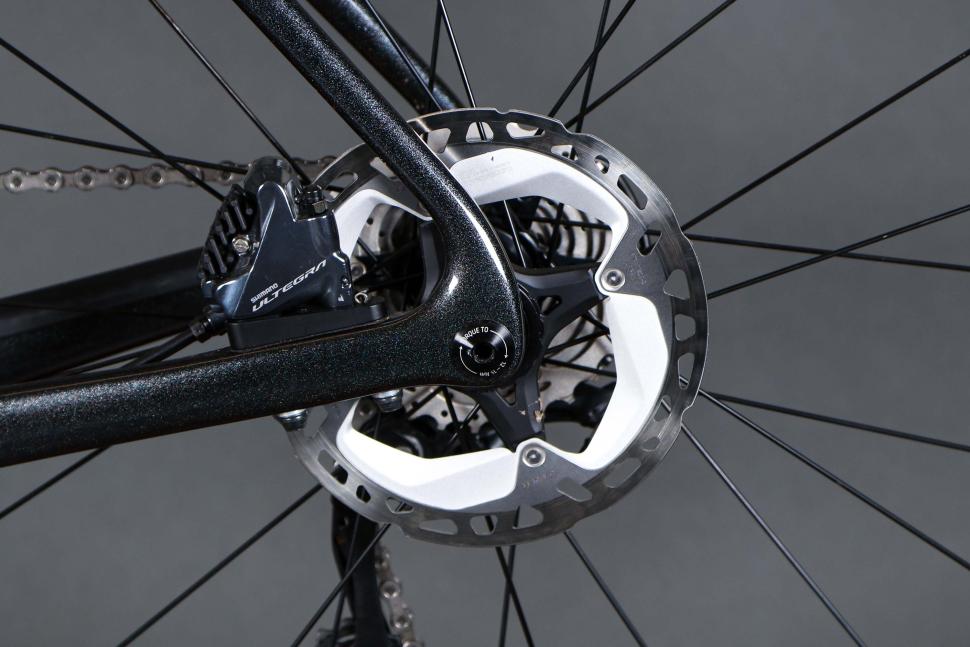


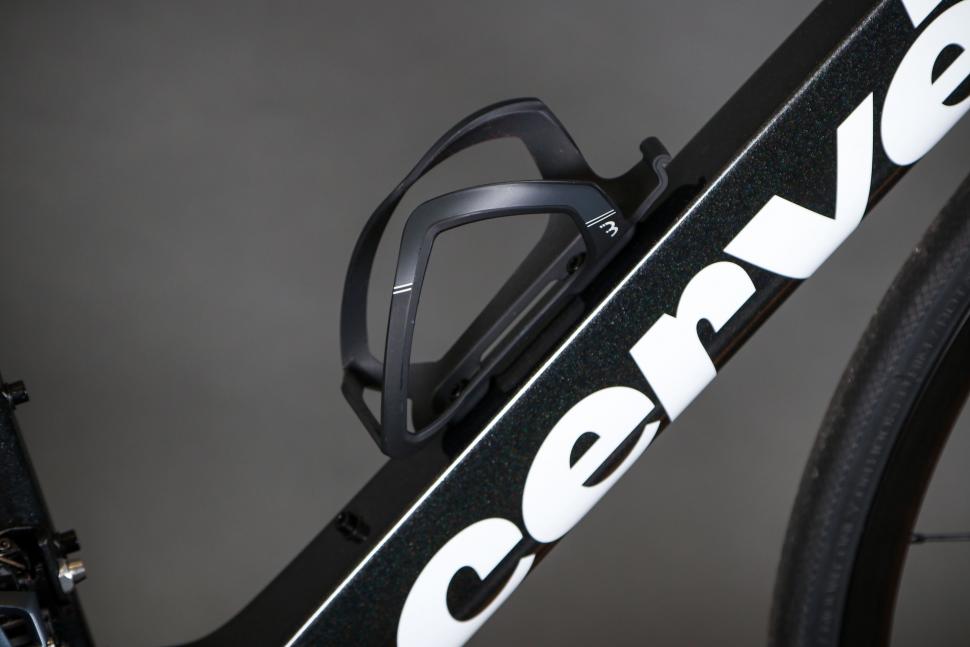













Add new comment
14 comments
Got my hands on a frame, put shimano ultegra Di2 12 Speed, Caledonia stem and aero bars off an R1, C50 full carbon ultegra wheels. It came out cheaper than a super Six, Izalco max or the like. This thing motors along the flats and rollers.. climbs well, descends like it's on rails, whilst it doesn't shake your teeth out on rough roads, the frame is stiff and power goes down on the road..
Last year when these were released I wanted to buy one but they're only now becoming available. After some research, this is the worst value of the range.
buy the 105 version and strip it for the frame. Sell everything and rebuild with the parts of your choice.
only the frame and seatpost are any good, all other non groupset parts are heavy junk, just to make the bike rideable out of the shop.
As for T47 being a selling point. I've seen plenty with shitty threads and misalignment issues. It's actually no better than pressfit but with extra weight.
Quite so.
The press-fit bike frames I have or have had have all been good i' the BB fit, without creak or difficulty changing the bearings when due.
But I've had many screwthread BB bikes in past times that had all sorts of BB issues, from threads badly cut and choked up with paint or even spatters of brazing gunk to oval BB shells to threads cut at a slight angle in the shell making any BB installed run badly.
A well made press fit frame BB shell makes a very smooth, strong, unflexy and long lasting bearing arrangement. They're also very easy to change with the right tools, as well as costing less than more complex BB modules that will fit badly anyway if the BB threads and ovality are less than perfect.
For roughly around the same money, I would rather get an ORRO VENTURI STC ULTEGRA DI2
Holy f***ing s**t Batman...four and a half grand for old mechanical Ultegra! Wow, that's absolutely nuts. I'll pass thanks.
And Fulcrum 600s, I mean, how much do you have to spend for genuinely decent wheels now?
I'd love to see a properly impartial article on greedflation in the bike industry, even the disc brake tax can't justify 8.5kg and cheap wheels for £4.5k can it?
Glad I'm going self build with a carbon Basso frameset, Ultegra and rim brakes (and Fulcrum 3s). Will cost half what this does and probably outperform it in every way except stopping distance 🙄
https://road.cc/content/feature/rising-cost-cycling-crisis-298419
The article you point at seems to be a container for advertising a large range of bikes whilst concluding nothing about the reasons for the inflationary prices other than Covid, Brexit and supply-demand.
A serious look at bicycle-stuff inflationary prices would examine, in detail, the profit margins being made and the organsiations making them.
It might discover, for example, that not only are profit margins being increased as part of the generalised greedflation of various capitalist enterprises in face of zero regulation of businesses in our neolib hegemony but also the proliferation of endless middlemen, all of whom want their cut so add their percentage increase to prices, for their dubious "services".
A comparison across brands would also be useful, to see how much less we can pay for essentially the same thing across various models of selling to us employed by different manufacturers and their retail methods.
And if Covid and Brexit are playing a role, as they no doubt are, it would be useful to know exactly how much of an inflationary price increase is due to each of them and how much to other factors.
But bicycle journalists are more PR repeaters than avid and skeptical seekers after truth, eh?
"We have seen brands such as Trek switch to T47 to exploit the same benefits press-fit BBs offer – larger bearings for increased stiffness – while avoiding the issues of creaking and wear created by poor tolerancing between frames and bearing cups."
In other words, brands have returned to threaded BBs because their miserable manufacturing processes and quality control procedures have meant that they are incapable of building a carbon fibre frame within the specifications of press fit bearing tolerances
The manufacturers using press for BB bearings can and do get it right in many (perhaps most) cases. Two factors seem to be involved with the creaking press-fit BBs we tend to hear of:
* Insufficient quality control so that some badly-formed BB examples are allowed through.
* Poor factory build processes so that various components, including press-fit BBs, are not properly installed.
I have two Trek carbon fibre Domane frames with BB90 press fit bearings. Both have done tens of thousands of kilometres before I needed to change the bearings. They never creaked.
Doing the installation of new bearings was very quick and easy with the right tools and procedures. A screwed puller rather than a drift and a hammer to remove the old bearings; use of the correct loctite stuffs after a thorough cleaning of the BB shell, properly applied, as insurance against any bearing movement after installing the new bearings.
In practice, a pair of cheap Enduro bearings for £20 are more than good enough, with no creak or tic, despite my vigorous thrusts at 'em as I honk up the Welsh hills.
***********
I also have a Lapierre e-Xelius, which is a wonderful frame clad with excellent components. However, I spend hours dismantling and rebuilding various of these components because whoever put the bike together in the factory failed to do so correctly with nearly every component poorly fitted. Now its perfek.
Yes. You can pay £4k for a frame and still get awful QA and tolerances. I have to assume its because no one does anything about it and you can't see most of the issues unless you look inside the frame or check the BB using specialist tools.
For the tools and methods of internal observation of bicycle components such as frames and wheels for quality of build, see the self-professed 5-year-old Hambini, who is nevertheless a highly qualified engineer good at "roasting overpriced and over-hyped crap bike stuff".
One does have to put up with a less than perfek presentational style, however.
https://www.hambini.com/category/reviews/
You can also get USB endoscopes for under a tenner from eBay - they use your phone as a screen.